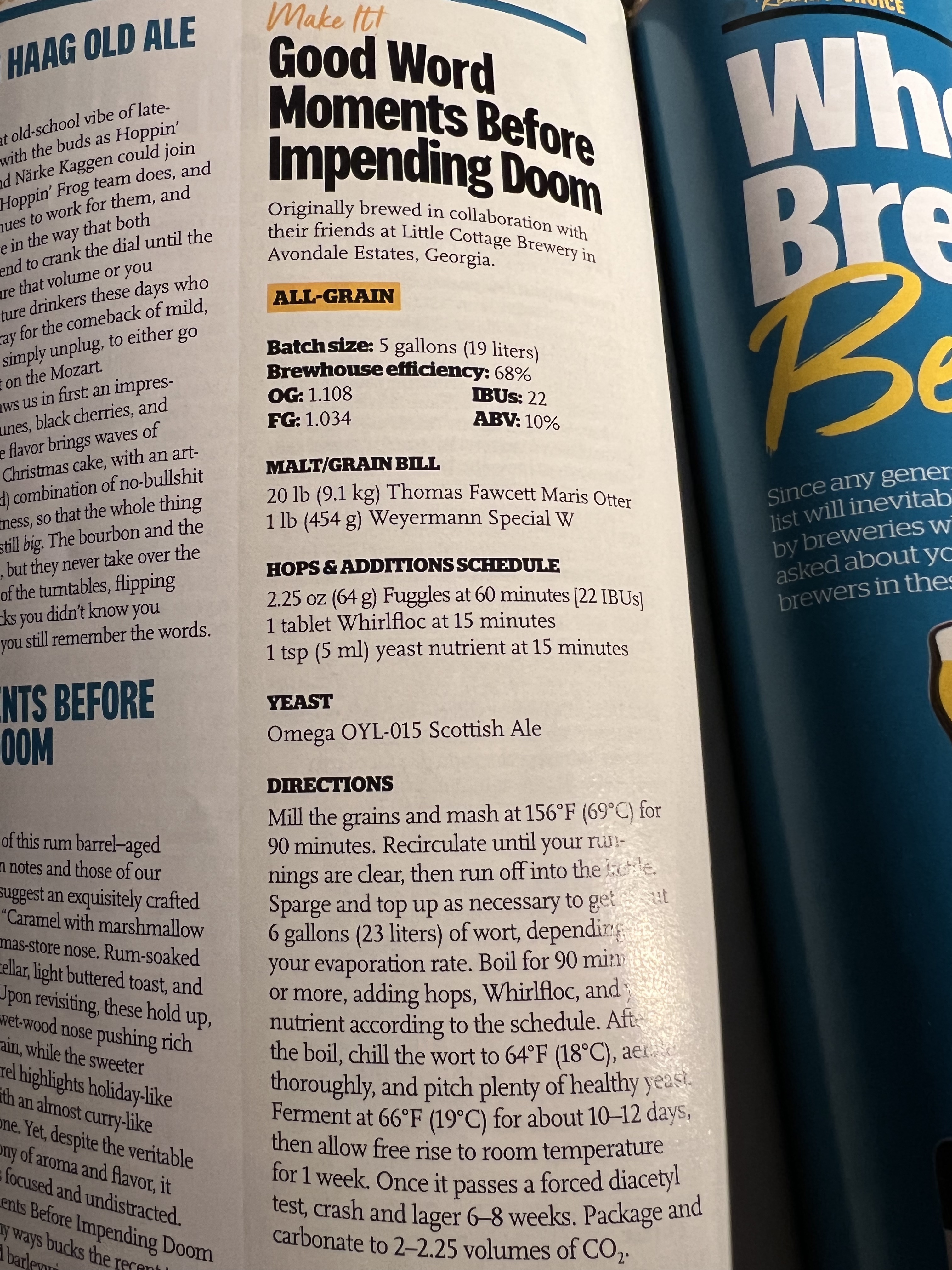Jack Arandir
Well-Known Member
Every year since 2016 my friends and I brew a big beer to age. Then we sample each year's batch. We've done 3 Russian Imperial Stouts, an Old Ale, and last year a Doppelbock. This year we want to brew a barleywine, and I have a second use whiskey barrel to age it in.
I've made several barleywines but I've never been happy with them. To my taste, I don't like the amber-to-brown flavors you get from victory, brown, and darker crystal malts. They've tasted toasty and muddy. By contrast, the doppelbock had astonishingly delicious flavors without any medium or crystal malts (just Pilsner, Munich, and a dash of Carafa II for color). That got me thinking -- what would doppelbock techniques taste like with English ingredients?
So this year I'm considering a 100% Maris Otter barleywine (plus a dash of midnight wheat for color adjustment). I'll use a combination of Muntons and Warminster to get some complexity, a German style double decoction, and a 2 hour boil to develop malty flavors. That should give plenty of melanoidins and complexity going into the fermenter, plus a year in the barrel to develop oak, bourbon, and wine-like flavors.
What do you think?

I've made several barleywines but I've never been happy with them. To my taste, I don't like the amber-to-brown flavors you get from victory, brown, and darker crystal malts. They've tasted toasty and muddy. By contrast, the doppelbock had astonishingly delicious flavors without any medium or crystal malts (just Pilsner, Munich, and a dash of Carafa II for color). That got me thinking -- what would doppelbock techniques taste like with English ingredients?
So this year I'm considering a 100% Maris Otter barleywine (plus a dash of midnight wheat for color adjustment). I'll use a combination of Muntons and Warminster to get some complexity, a German style double decoction, and a 2 hour boil to develop malty flavors. That should give plenty of melanoidins and complexity going into the fermenter, plus a year in the barrel to develop oak, bourbon, and wine-like flavors.
What do you think?





















![Craft A Brew - Safale S-04 Dry Yeast - Fermentis - English Ale Dry Yeast - For English and American Ales and Hard Apple Ciders - Ingredients for Home Brewing - Beer Making Supplies - [1 Pack]](https://m.media-amazon.com/images/I/41fVGNh6JfL._SL500_.jpg)






































